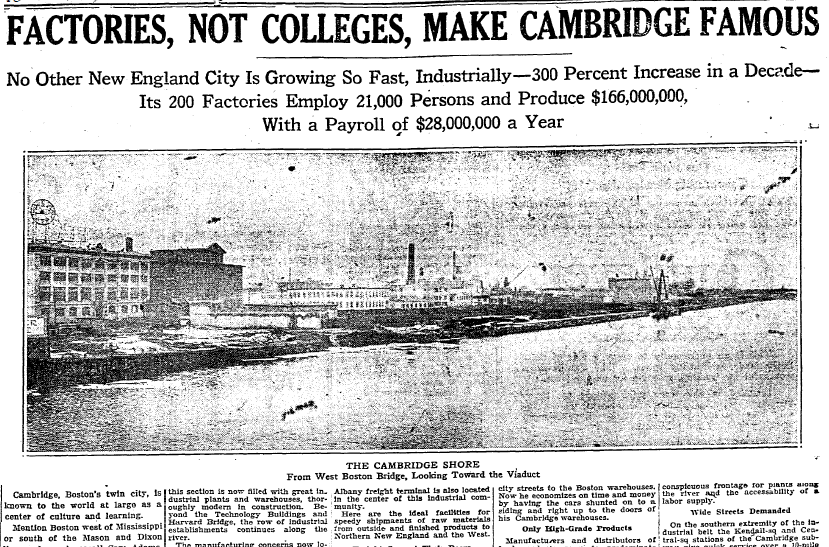Minimum Wages for Women in Early 20th Century Cambridge
By Sarah Huggins, Intern, Lesley University
March 2020
What image enters your mind when thinking about Cambridge? For many, it’s the Corinthian columns of our prestigious institutions of higher education. But less than a hundred years ago the city was a major industrial center:- a manufacturing mecca of brick buildings and smokestacks. The Boston Daily Globe boasted in 1927, “Factories, not colleges, make Cambridge famous.” Those factories needed workers, and as women entered the workforce in large numbers, male academics debated this shift, asking, “Is women’s labor parasitic?”

The basis for that question was formed by a paternalistic and anti-immigrant stance on the appropriate wages for “the independent woman,” a “new” burgeoning force in the economy; 80% of the women working in the candy and brush factories of East Cambridge fell into this category. In 1916, a Harvard economist argued against a minimum wage increase from $6.00 to $8.00 a week for “the poor creatures,” basing his argument on the assumption that the difference would be made up for by parents, charities, or, for women in dire straits, prostitution. The two main factors inhibiting support for higher wages for female workers were, first, the conviction that these women made weak bargainers because they were “young, timid and ignorant,” and, second, that “the inflowing army of immigrants” among the female workforce would hamper American prosperity. If women’s wages were to rise, so the argument went, this would potentially lead to less efficient workers, as well as to their replacement by men, skilled or unskilled. Such an outcome was actually portrayed as “desirable” by those who believed that male breadwinners needed–and deserved–a salary high enough to support their families.
The working women and girls of early 20th century Cambridge were, at best, vulnerable to stereotypical assumptions about their propensity for work, bargaining ability, and dependency on others. Beyond these pervasive stereotypes existed the intimate realities of these women’s working lives–realities largely ignored by the economist’s study. Over the past century single, self-supporting women have become commonplace and views have largely moved on from such paternalistic “concerns,” but much of the conversation around wage equality has continued. As we ponder these significant changes for women in the workforce in the past hundred years, we are left wondering: what is it in the fabric of our society– be it in Cambridge or elsewhere –that continues to allow disparities in wages between women and men?






